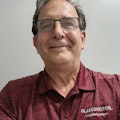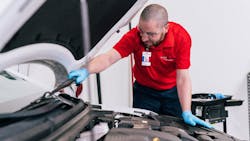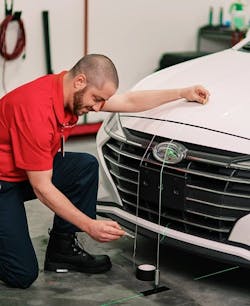ADAS and Collision Repair: The Growing Intersection of Glass Repair and Body Shops in Today’s High-Tech Vehicles
Key Highlights
- ADAS features like lane-keeping and collision warnings are now standard, making windshield repairs safety-critical due to sensor and camera dependencies.
- Proper calibration after glass replacement is essential; misalignment can impair safety systems, increasing liability and repair costs.
- Technicians need specialized training in onboard software, OEM protocols, and validation testing to ensure accurate ADAS calibration.
- Four main calibration methods exist: dynamic, static, dual, and sequential, each requiring specific procedures and adherence to manufacturer guidelines.
- Repair costs for ADAS-equipped vehicles have risen significantly, emphasizing the importance of transparent customer communication and comprehensive shop procedures.
Modern vehicles are no longer just machines; they’re rolling networks of sensors, cameras, and software, with advanced driver assistance systems (ADAS) embedded at their core. These technologies, like adaptive cruise control, lane-keeping assistance, and forward collision warnings, are no longer exclusive to luxury models. In fact, they’re now standard across a growing range of passenger vehicles.
While these systems have greatly improved safety, they have also transformed the collision and auto glass repair industry. Today, something as routine as a windshield replacement or bumper repair is no longer simple, as it may involve complex recalibration procedures, advanced diagnostics, and strict adherence to manufacturer protocols.
Why Glass Repairs Are Now Safety-Critical
ADAS features rely on a precise ecosystem of sensors and cameras, many of which are mounted to or behind the windshield. As a result, auto glass repair is now a mission-critical part of vehicle safety.
Without proper calibration after glass replacement, the ADAS system may fail to perform. This could lead to missed hazard warnings, lane-keeping issues, or braking system errors, all of which increase the risk for drivers and liability for repair shops.
According to the Insurance Institute for Highway Safety (IIHS), even slight misalignment of sensors can impair safety system performance (AAA). The American Automobile Association also adds that vehicles equipped with ADAS features can see repair costs rise by up to 37%, largely due to the added calibration requirements.
Technician Training: The New Frontier in Vehicle Repair
Proper ADAS calibration requires both specialized tools and expert training. It’s no longer enough for technicians to be skilled at glass removal or structural repair. They must now understand onboard software, follow OEM calibration protocols, and perform validation tests.
A typical calibration workflow includes:
- Pre-scan: Assess the system for faults before any repair work begins.
- Safe Removal of Components: Carefully remove ADAS-connected hardware (like cameras) according to manufacturer guidelines.
- Precise Installation: Ensure replacement parts (windshields, bumpers, etc.) are correctly positioned.
- System Calibration: Use the correct method and tools to realign ADAS sensors.
- Functional Testing: Simulate conditions to confirm system responsiveness (e.g., attempt a lane change without signaling to test lane departure warnings).
- Post-Scan and Documentation: Verify and record results using industry checklists, such as those from the Auto Glass Safety Council (AGSC).
Any deviation from this process could compromise driver safety and expose shops to liability.
Understanding the Types of ADAS Calibration
ADAS calibration ensures that the vehicle’s sensors and cameras are aligned correctly so the system functions as the manufacturer intended. There are now four key methods used:
- Dynamic Calibration: The vehicle is driven under very specific performance parameters while connected to a diagnostic tool. The system is collecting data as the vehicle moves through the environment. The system self-adjusts based on environmental data.
- Static Calibration: Conducted indoors under environmentally controlled conditions with visual targets placed at specific positions. Cameras emit pulses to lock in positional accuracy. The camera pulses are designed to replicate the vehicle passing through the environment as in the dynamic process.
- Dual Calibration: Combines both static and dynamic processes. Many newer vehicles now require this hybrid approach.
- Sequential Calibration: As the name implies, specific processes must be completed in a sequence. The latest vehicle utilizing this process is the three-camera Subaru Eyesight system. This latest design for ADAS requires that the wide-angle camera be calibrated and complete the process before access to the remaining Eyesight cameras is permitted. You must then perform the required dual calibration on the remaining Eyesight components.
Each manufacturer has unique specifications, and skipping even one step can render the safety systems unreliable.
Rising Repair Costs and Customer Communication
Repairing ADAS-equipped vehicles often costs more. Windshield replacements, once a $300 fix, now frequently exceed $1,000 due to camera removal, software access, and calibration steps. While customers may initially balk at these increases, clear communication is key.
Explain not just the cost, but why these steps are necessary as transparency builds trust and positions your shop as a knowledgeable, safety-first service provider.
Adapting Shop Operations for ADAS Demands
To stay competitive and compliant in the ADAS era, collision and glass repair shops must evolve. Here’s how:
- Invest in Calibration Equipment: Choose systems that support both static and dynamic procedures across a wide range of vehicle types and models.
- Update Repair Estimates: Factor in time, labor, and recalibration as part of the standard estimate for qualifying vehicles.
- Partner Across Specialties: Build relationships between body and glass technicians or bring both services in-house to streamline service.
- Pursue Certification: OEM certifications and I-CAR recognition demonstrate that your shop is equipped to safely repair ADAS-equipped vehicles.
As vehicles grow even more sophisticated, we’re beginning to see the rise of sequential calibration: a requirement for multiple calibration steps in a specific order to fully reset a system. This adds more responsibility to the repair process but also increases the opportunity for shops to differentiate based on capability and trust.
Final Thoughts
The fusion of glass, electronic systems, and structural repair is changing the collision repair industry. ADAS is not a niche feature; it’s the new standard. Shops that embrace this shift, invest in training, and adapt their operations will be well positioned for long-term success.
By treating ADAS calibration as a critical safety procedure rather than an optional add on, we not only deliver safer vehicles but also strengthen the future of our industry.
About the Author

Thomas Patterson
Thomas Patterson is the director of new product development and technical training at Glass Doctor, a Neighborly company, specializing in professional glass repair, windshield replacements, and custom shower glass installations tailored to individual requirements. With a wealth of experience, Thomas is accountable for conducting research, developing new products, and expanding our service offerings. In addition, Thomas actively participates as a member of the National Glass Association Certification Committee, Auto Glass Safety Council, and the ARG Alliance. His dedication to the industry is further exemplified by his NGA Master Certified Auto Glass Installer status and his role as an AGSC Instructor, providing invaluable guidance in obtaining industry-specific certifications.


